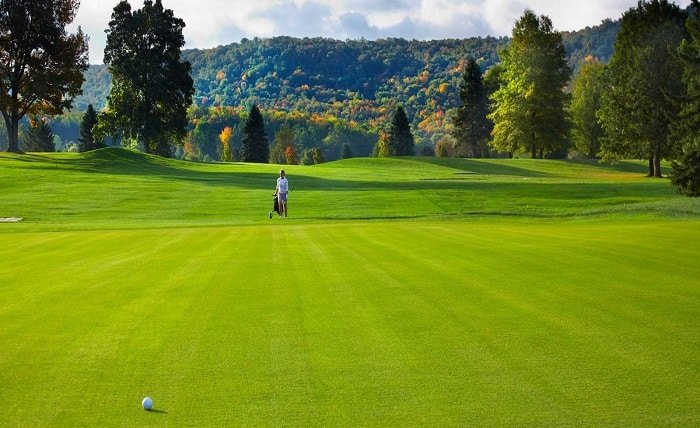Africa Turf: The Evolution, Popularity, and Future of Green Innovation Across the Continent

Africa turf has become a revolutionary element in landscaping, reshaping how outdoor spaces are designed in both urban and rural settings. From residential gardens in Johannesburg to public parks in Nairobi, Africa turf provides a consistent green aesthetic with minimal maintenance. Unlike natural grass, which struggles in dry climates, Africa turf thrives under intense African sun, maintaining its color and texture year-round.
The widespread adoption of Africa turf in landscaping projects has led to more water-efficient environments. Homeowners and municipalities alike are turning to Africa turf as a way to conserve water while still enjoying lush, green landscapes. As Africa faces increasing climate challenges, turf solutions are becoming not only desirable but essential.
Africa turf also plays a key role in reducing dust and improving air quality in heavily trafficked urban zones. With its durable and eco-friendly design, Africa turf stands as a smart alternative to traditional ground covers. Landscape designers across the continent are now incorporating Africa turf into their plans to balance beauty, sustainability, and practicality.
Africa Turf in Sports: Enhancing Performance on the Field
The use of Africa turf in sports facilities is booming, revolutionizing the way African athletes train and compete. Traditional grass fields require constant upkeep, suffer from wear and tear, and become unusable during rainy seasons. Africa turf, by contrast, remains consistent regardless of the weather, making it the perfect choice for football, rugby, athletics, and school sports.
Across the continent, countries like Nigeria, South Africa, Egypt, and Morocco are investing heavily in stadiums equipped with Africa turf. This investment is yielding better performance outcomes, safer playing surfaces, and reduced operational costs. Africa turf allows teams to practice more frequently without damaging the field, ultimately raising the standard of African sports.
Moreover, the durability of Africa turf makes it ideal for community sports programs. Youth clubs and schools benefit greatly from fields that don’t require irrigation, fertilizers, or mowing. With Africa turf, sports development is no longer hindered by infrastructure challenges. Its adoption has become a symbol of progress in sports empowerment across the continent.
Africa Turf and Water Conservation: A Sustainable Solution
Africa turf has gained widespread praise for its role in water conservation. With water scarcity affecting many African countries, solutions like Africa turf offer a practical way to reduce consumption. Traditional lawns can consume thousands of liters of water per month, while Africa turf remains lush and green with no irrigation.
This advantage makes Africa turf particularly appealing in arid regions such as the Sahel, the Horn of Africa, and Southern Africa. In these areas, agriculture and municipal water supplies are under stress, and every drop of water counts. By switching to Africa turf, communities can redirect water to where it’s needed most—drinking, farming, and sanitation.
Environmental agencies now endorse Africa turf as part of broader conservation strategies. Beyond its low water usage, Africa turf also requires fewer chemicals, making it safer for ecosystems and local wildlife. From eco-resorts to residential estates, Africa turf continues to be at the forefront of sustainable landscaping innovation.
Africa Turf and Urban Development: Building Greener Cities
As African cities rapidly expand, urban planners are turning to Africa turf to bring green life into concrete-heavy environments. Africa turf is being used to line sidewalks, rooftops, roundabouts, and commercial spaces, adding much-needed greenery without the complications of traditional gardening. With Africa turf, developers can transform even the smallest urban nook into a green oasis.
In cities like Lagos, Addis Ababa, and Accra, where space is tight and pollution is high, Africa turf is a low-maintenance, aesthetically pleasing solution. It doesn’t require soil quality tests or seasonal planting, which makes it ideal for dense urban areas. Africa turf contributes not only to beautification but also to cooling effects in urban heat islands.
Corporate offices and shopping malls are increasingly opting for Africa turf on terraces and open areas. This trend is also gaining momentum in residential apartment complexes where natural green areas are limited. Africa turf enables vertical cities to reconnect with nature while promoting sustainability.
Africa Turf for Events and Tourism: Elevating Aesthetics and Comfort
Event planners across the continent are recognizing the benefits of Africa turf in creating inviting and photogenic spaces. From weddings in Cape Town to concerts in Nairobi, Africa turf provides a luxurious green floor that enhances any venue. It’s not just about looks—Africa turf offers comfort underfoot and withstands heavy foot traffic without losing its appeal.
Tourism-focused businesses are also investing in Africa turf. Resorts, safari lodges, and beachfront properties are using Africa turf to craft eye-catching landscapes that remain perfect year-round. Guests enjoy the consistent beauty, and property owners enjoy the reduced maintenance and improved customer satisfaction.
Africa turf also reduces the environmental footprint of temporary event setups. Unlike real grass that can be damaged by installations or crowds, Africa turf can be reused multiple times. This reusability makes Africa turf a cost-effective and eco-conscious choice in the booming African event industry.
Africa Turf and Employment: Fueling Green Jobs and Innovation
The rise of Africa turf has opened up a new green economy, generating jobs and fostering entrepreneurship. From manufacturing to installation and maintenance, the Africa turf industry employs thousands across the continent. Training centers are emerging to equip workers with the skills needed for this growing sector.
Africa turf is also inspiring young entrepreneurs to launch their own landscaping or turf-installation businesses. With demand for Africa turf surging in both residential and commercial markets, this field offers solid income potential. Business owners are providing turf services to schools, homes, and corporations, creating sustainable employment opportunities.
Moreover, local production of Africa turf materials is on the rise. Countries are investing in manufacturing plants that produce Africa turf using recycled plastics and sustainable polymers. This shift not only reduces imports but also boosts circular economies. Africa turf is becoming a symbol of both environmental and economic empowerment.
Africa Turf in Education and Awareness: Spreading the Green Message
Education campaigns are crucial to promoting Africa turf and its long-term benefits. NGOs, government bodies, and environmental advocates are using Africa turf as a teaching tool to promote sustainability. By showcasing the advantages of Africa turf—water savings, low maintenance, and aesthetic beauty—they encourage eco-conscious behavior among students and communities.
Schools are increasingly installing Africa turf in playgrounds and assembly areas. These installations serve as real-life examples of sustainability in action. Students learn about eco-friendly alternatives while enjoying safe and clean recreational spaces. Africa turf, in this sense, becomes both a practical solution and an educational platform.
Social media influencers and content creators are also spotlighting Africa turf installations to raise awareness. Platforms like YouTube, TikTok, and Instagram are filled with transformation videos that highlight the magic of Africa turf. As digital reach expands, so does the public understanding and acceptance of Africa turf as a future-forward solution.
Conclusion
Africa turf is more than just synthetic grass—it represents a sustainable shift in how the continent approaches landscaping, sports, water conservation, and urban development. With benefits ranging from reduced maintenance to environmental impact, Africa turf is redefining green spaces across Africa. Whether in bustling cities, arid villages, or luxurious resorts, Africa turf provides consistent beauty, functionality, and resilience.
As innovation and local production grow, Africa turf will continue to influence how Africans build, play, work, and live. Its role in education, job creation, and tourism highlights its multifaceted potential. Africa turf isn’t just a trend—it’s a movement toward a greener, smarter, and more self-sufficient continent.
FAQs
1. What is Africa turf and how is it different from natural grass?
Africa turf is a synthetic grass surface designed for durability and low maintenance in African climates. Unlike natural grass, Africa turf does not require regular watering, mowing, or fertilizing, making it ideal for eco-conscious landscaping.
2. Is Africa turf safe for children and pets?
Yes, Africa turf is made from non-toxic materials and is safe for children and pets. Many schools and homes use Africa turf for play areas due to its soft, cushioned surface and hypoallergenic properties.
3. How long does Africa turf last?
With proper installation and minimal maintenance, Africa turf can last 8 to 15 years. Its UV-resistant fibers and drainage systems ensure that it retains its look and function for years.
4. Can Africa turf be used in agriculture or farming?
While Africa turf is not suitable for growing crops, it is used in agro-tourism setups and farm aesthetics. It provides clean and usable green zones in areas where growing real grass would be difficult or water-intensive.
5. How much does Africa turf cost in African countries?
The cost of Africa turf varies depending on quality, installation services, and location. On average, prices range from $5 to $15 per square meter, but local suppliers may offer better deals or packages.



